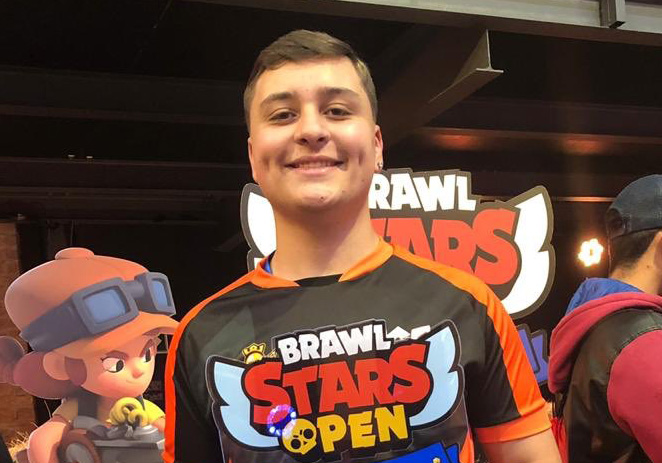What is the economy of games as a service?
A simplified look at how games companies operate and the cost of making games. 🧵 (Long)
#GameDev #GaaS #economy
A simplified look at how games companies operate and the cost of making games. 🧵 (Long)
#GameDev #GaaS #economy
Read about an example case of an imaginary gaming company below.
Assumption:
5,000,000 DAU game
Please note that there's a ton of simplification going on in the thread. People write books about these things. This is very incomplete. 😂
Assumption:
5,000,000 DAU game
Please note that there's a ton of simplification going on in the thread. People write books about these things. This is very incomplete. 😂
Cost
Facilities/Office/WFH = $1,000/person
Server Infrastructure = $1,000,000/month
Salaries = $8,000/person
Employer Contributions* =$8,000/person
Marketing = TBD% of income
Platform Fees = 30% of income (Apple/Google)
Taxes = 21% of income (ex. USA)
Facilities/Office/WFH = $1,000/person
Server Infrastructure = $1,000,000/month
Salaries = $8,000/person
Employer Contributions* =$8,000/person
Marketing = TBD% of income
Platform Fees = 30% of income (Apple/Google)
Taxes = 21% of income (ex. USA)
Marketing includes Community, Esport, User Acquisition, etc.
5m DAU would likely put you in the Top 5-percentile of all games on the planet. Likely closer to the 1-percentile.
5m DAU would likely put you in the Top 5-percentile of all games on the planet. Likely closer to the 1-percentile.
Let's assume you operate very lean (!), you'd likely employ around 20 developers + 10 support functions. For simplicity let's assume all of them have the same income. You'll also need other staff. IT, HR, Administration, Finance, etc. - let's assume thats another 5-10 people.
40 employees x $17,000/month = $680,000/month
So we'd look at a basic running cost of $1,680,000/month.
So we'd look at a basic running cost of $1,680,000/month.
Let's now assume 5% of your players spend $5 USD/month on a Battle Pass + another $2 USD/month on cosmetics and 5% spend $1 USD/month on progress. That spend includes VAT. Let's say that averages at 20% depending on where that purchase is made.
Let's assume the 5,000,000 DAU translates into about 20,000,000 MAU (monthly active players), which will vary a lot depending on how casual or hardcore your game is.
20,000,000 x 5% x $7 USD = $7,000,000
20,000,000 x 5% x $1 USD = $1,000,000
20,000,000 x 5% x $7 USD = $7,000,000
20,000,000 x 5% x $1 USD = $1,000,000
VAT = $1,600,000 (tax authorities)
Revenue = $6,400,000 (company)
Total Revenue = $6,400,000
Platform Fee (30%) = $1,920,000
Taxes (21%) = $1,344,000
Remainder = $3,136,000
Cost (see above) = $1,680,000
Remainder = $1,456,000
Revenue = $6,400,000 (company)
Total Revenue = $6,400,000
Platform Fee (30%) = $1,920,000
Taxes (21%) = $1,344,000
Remainder = $3,136,000
Cost (see above) = $1,680,000
Remainder = $1,456,000
That isn't profit. To sustain the DAU/MAU you need to re-invest. Many companies invest heavily in marketing in order to acquire new users, looking at variable payback times until profit happens.
Some companies spend more than they make (and generate a deficit), others re-invest everything they have left and others invest a % of topline revenue.
None of these guarantee success. In above example, if we'd invest a fixed 20% of topline revenue, that'd be $1,600,000/month which means we'd operate at a loss of $144,000/month or $1,728,000/year.
Depending on your cash from initial investments you burn through that until you start to turn a profit once the payback happens or you improve any of the other factors.
There's a gazillion other micro things going on ofc. How long to players stick around (retention)? Can you improve spending? Does it simply take 24 months to get the payback from the User Acquisition?
In all of this: bonuses are often based on profit sharing. So as long as you don't generate a profit, employees will likely be stuck with their base compensation, company shares aren't worth much if you don't get dividends and you can't sell them.
Good luck trying to retain the best industry talent under these circumstances in a hyper competitive market.
You might also run out of cash before you turn a profit = company dies if you can't find further investors/a buyer. Depending from where that money comes from in the first place, there might be angry board meetings pushing you to do things you don't like.
In all of this there's not even talk or growing the company or creating other games...
Esports would likely be something like 1% of revenue or $80,000/month in our example - I'd be surprised if more than $20,000/month could be made available for price pools - that's $240,000/year including finals, etc.
To be fair, it's rather unlikely that in above scenario anyone would sign off on esports in the first place, given the unclear return of investment.
So when me or people from other games companies talk about the economy of games, that's what we're talking about. Above isn't our specific reality, but the basic assumptions are the same.
We try to strike a good balance between making the game F2P friendly while making it worth our while as a company to keep developing it actively for you.
Managing our in-game economy is a fine balance. Too F2P friendly? Unsustainable. Too harsh economy? Also unsustainable - it's harder to find players who want to stick around (low retention) which leads to higher cost for user acquisition.
So we need to find the sweet spot, and the only way doing this is to look at a ton of data and keep an eye out on how the community feels. This process NEVER ends.
Hope this gives you a small insight how game companies operate. That might also explain why companies take games off-line, stop updating or stop their esports efforts (in regions where it's not profitable).
• • •
Missing some Tweet in this thread? You can try to
force a refresh









